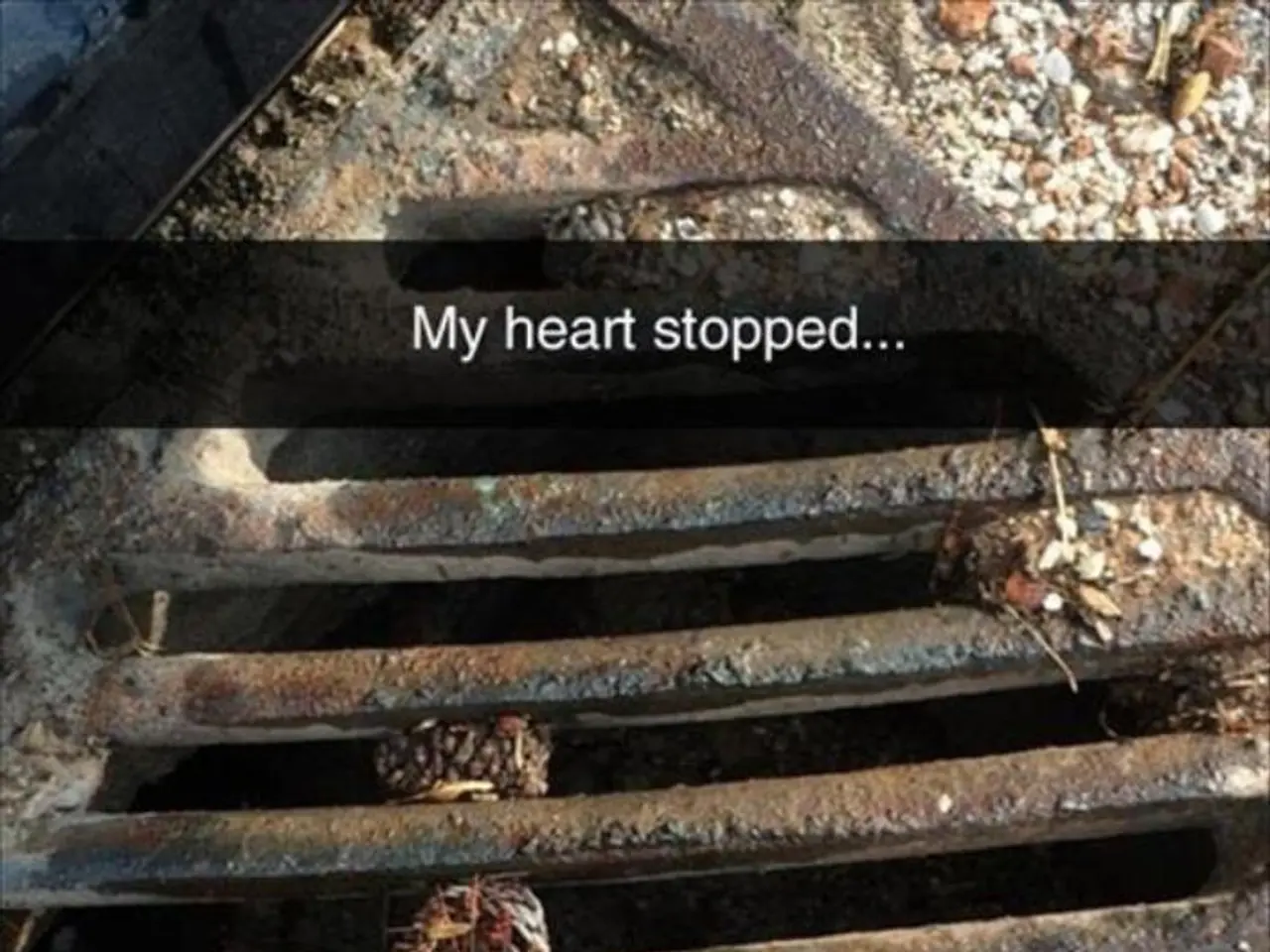Heart Attack Aid: When and How CPR Can Be Used Effectively
=========================================================================
In emergency situations, knowing how and when to administer Cardiopulmonary Resuscitation (CPR) can be crucial. Here's a breakdown of the key points to help you make informed decisions.
CPR and Cardiac Arrest
CPR should be administered immediately in cases of cardiac arrest, a condition where the heart suddenly stops beating, and the person becomes unresponsive, stops breathing, or shows no normal breathing (only occasional gasping). This is crucial to maintain blood flow to the brain and vital organs until professional medical help or an Automated External Defibrillator (AED) is available [1][2][3][5].
CPR and Heart Attacks
CPR is generally not the first response to a heart attack unless it progresses to cardiac arrest. A heart attack typically involves blocked blood flow to the heart, but the heart may still be beating. The immediate response for heart attack includes calling emergency services and giving aspirin to prevent further clotting, but CPR only becomes necessary if the person loses consciousness and stops breathing or has no pulse, indicating cardiac arrest [1][2].
Key Points for Administering CPR
- Perform CPR when the person is unresponsive, not breathing or not breathing normally (e.g., agonal gasps) [2][3].
- Start with chest compressions: Push hard and fast in the center of the chest, at least 2 inches deep and 100-120 compressions per minute [3][5].
- If trained, provide rescue breaths in a ratio of 30 compressions to 2 breaths [3][5].
- Continue CPR until emergency medical services arrive, an AED becomes available, or the person shows signs of life such as movement or normal breathing [3][4][5].
- Use an AED as soon as possible in cardiac arrest cases, as the electric shock can restore normal heart rhythm [1][3][5].
CPR and Training
Additional training and education may be necessary to help people understand when stopping CPR is appropriate. The American Heart Association recommends a two-step version of CPR for untrained individuals: call 911 and push down hard and quickly on the center of the chest [5].
The Importance of CPR
Without CPR, a person can die quickly due to the cessation of blood flow to the lungs, brain, and vital organs. A 2016 study suggests that newer changes to CPR recommendations that do not emphasize routine pulse checks may lead to confusion among people who complete Advanced Cardiac Life Support training [6].
Heart Attack Symptoms and First Aid
People should call 911 immediately if they believe they or another person is experiencing a heart attack, and common symptoms include shortness of breath, intense chest pain, pain in arms, neck, jaw, stomach, or back, lightheadedness, nausea, and cold sweats. These symptoms may come on suddenly or more slowly over several minutes, hours, days, or weeks [1][2].
Resources for Learning CPR
Individuals can search for local CPR classes using the AHA's online resources to learn more about CPR and how to administer it effectively in emergency situations.
References:
[1] American Heart Association. (2021). First Aid. Retrieved from https://www.heart.org/en/health-topics/firstaid
[2] American Heart Association. (2021). CPR and AED. Retrieved from https://www.heart.org/en/health-topics/cardiopulmonary-resuscitation-cpr/cpr-and-aed
[3] American Heart Association. (2021). Hands-Only CPR. Retrieved from https://www.heart.org/en/health-topics/cardiopulmonary-resuscitation-cpr/cpr-and-aed/hands-only-cpr
[4] American Heart Association. (2021). CPR and AED in the Workplace. Retrieved from https://www.heart.org/en/health-topics/cardiopulmonary-resuscitation-cpr/cpr-and-aed/cpr-and-aed-in-the-workplace
[5] American Heart Association. (2021). CPR for the Public. Retrieved from https://www.heart.org/en/health-topics/cardiopulmonary-resuscitation-cpr/cpr-for-the-public
[6] Auerbach, P. D., et al. (2016). Impact of the 2010 American Heart Association Guidelines for Cardiopulmonary Resuscitation and Emergency Cardiovascular Care on Advanced Cardiac Life Support training: A survey of 11,097 physicians. Resuscitation, 108, 131-136. doi: 10.1016/j.resuscitation.2016.05.034
- Integrating learning about first aid and safety, especially CPR, into a comprehensive health-and-wellness program could help individuals better understand how to respond in emergency situations, potentially saving lives.
- With the rise of chronic diseases and cancer, understanding how to administer CPR is a crucial aspect of medical-conditions education, as it can increase the likelihood of survival after cardiac arrest.
- Fitness-and-exercise is not only beneficial for cardiovascular-health, but it also plays a role in management and prevention of various medical conditions, reducing the risk of cardiac arrest and the need for CPR.
- In addition to physical health, mental-health is equally important and should be a part of holistic health-and-wellness programs, as mental health conditions can impact overall health and may increase the risk of heart attacks or stroke.
- Balanced nutrition, rich in fruits, vegetables, and lean proteins, is essential for maintaining a healthy body, not only for general wellness but also to reduce the risks associated with chronic diseases, cancer, and cardiovascular problems, potentially decreasing the need for CPR.
- When choosing supplements for health-and-wellness-support, consider products like CBD, which have been reported to have potential benefits for managing stress, anxiety, pain, and inflammation, contributing to better overall health and potentially reducing the risks associated with heart attacks or cardiac arrest.




